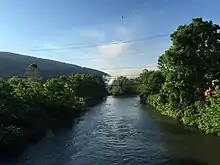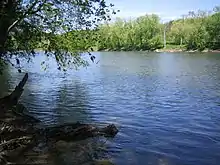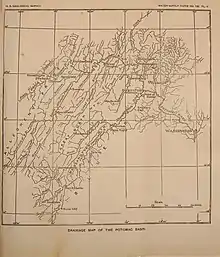Potomac River
The Potomac River (/pəˈtoʊmək/ (![]() listen)) is found within the Mid-Atlantic region of the United States and flows from the Potomac Highlands into the Chesapeake Bay. The river (main stem and North Branch) is approximately 405 miles (652 km) long,[4] with a drainage area of about 14,700 square miles (38,000 km2).[5] In terms of area, this makes the Potomac River the fourth largest river along the East Coast of the United States and the 21st largest in the United States. Over 5 million people live within the Potomac watershed.
listen)) is found within the Mid-Atlantic region of the United States and flows from the Potomac Highlands into the Chesapeake Bay. The river (main stem and North Branch) is approximately 405 miles (652 km) long,[4] with a drainage area of about 14,700 square miles (38,000 km2).[5] In terms of area, this makes the Potomac River the fourth largest river along the East Coast of the United States and the 21st largest in the United States. Over 5 million people live within the Potomac watershed.
| Potomac River | |
|---|---|
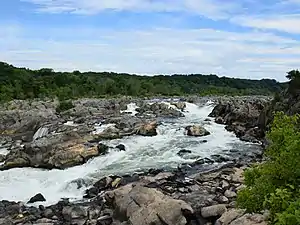 | |
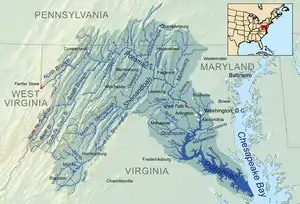 The Potomac River watershed covers the District of Columbia and parts of four states | |
| Native name | Patawomeck |
| Location | |
| Country | United States |
| State | West Virginia, Maryland, Virginia, District of Columbia |
| Cities | Cumberland, MD, Harpers Ferry, WV, Washington, D.C., Alexandria, VA |
| Physical characteristics | |
| Source | Fairfax Stone |
| • location | Preston County, West Virginia, United States |
| • coordinates | 39°11′43″N 79°29′28″W |
| • elevation | 3,060 ft (930 m) |
| Mouth | Chesapeake Bay |
• location | St. Mary's County, Maryland/Northumberland County, Virginia, United States |
• coordinates | 37°59′57″N 76°14′59″W |
• elevation | 0 ft (0 m) |
| Length | 405 mi (652 km) |
| Basin size | 14,700 sq mi (38,000 km2) |
| Discharge | |
| • location | Little Falls, near Washington, D.C. (non-tidal; water years: 1931–2018)[2] |
| • average | 11,498 cu ft/s (325.6 m3/s) (1931–2018) |
| • minimum | 4,017 cu ft/s (113.7 m3/s) (2002) |
| • maximum | 23,760 cu ft/s (673 m3/s) (1996) |
| Discharge | |
| • location | Point of Rocks, Maryland |
| • average | 9,504 cu ft/s (269.1 m3/s) |
| Discharge | |
| • location | Hancock, Maryland |
| • average | 4,168 cu ft/s (118.0 m3/s) |
| Discharge | |
| • location | Paw Paw, West Virginia |
| • average | 3,376 cu ft/s (95.6 m3/s) |
| Basin features | |
| Tributaries | |
| • left | Conococheague Creek, Antietam Creek, Monocacy River, Rock Creek, Anacostia River |
| • right | Cacapon River, Shenandoah River, Goose Creek, Occoquan River, Wicomico River |
| ------------------------------------------------------------------ Note: Since 1996, the Potomac has been the 'sister river' of the Ara River of Tokyo, Japan[3] | |
The river forms part of the borders between Maryland and Washington, D.C., on the left descending bank and West Virginia and Virginia on the river's right descending bank. The majority of the lower Potomac River is part of Maryland. Exceptions include a small tidal portion within the District of Columbia, and the border with Virginia being delineated from "point to point" (thus various bays and shoreline indentations lie in Virginia). Except for a small portion of its headwaters in West Virginia, the North Branch Potomac River is considered part of Maryland to the low water mark on the opposite bank. The South Branch Potomac River lies completely within the state of West Virginia except for its headwaters, which lie in Virginia.
Course

The Potomac River runs 405 miles (652 km) from Fairfax Stone Historical Monument State Park in West Virginia on the Allegheny Plateau to Point Lookout, Maryland, and drains 14,679 square miles (38,020 km2). The length of the river from the junction of its North and South Branches to Point Lookout is 302 miles (486 km).[4] The average daily flow during the water years 1931–2018 was 11,498 cubic feet (325.6 m3) /s.[2] The highest average daily flow ever recorded on the Potomac at Little Falls, Maryland (near Washington, D.C.), was in March 1936 when it reached 426,000 cubic feet (12,100 m3) /s.[2] The lowest average daily flow ever recorded at the same location was 601.0 cubic feet (17.02 m3) /s in September 1966[2] The highest crest of the Potomac ever registered at Little Falls was 28.10 ft, on March 19, 1936;[6][7] however, the most damaging flood to affect Washington, DC and its metropolitan area was that of October 1942.[8]
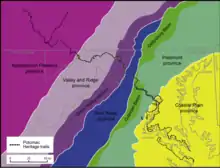

The river has two sources. The source of the North Branch is at the Fairfax Stone located at the junction of Grant, Tucker, and Preston counties in West Virginia. The source of the South Branch is located near Hightown in northern Highland County, Virginia. The river's two branches converge just east of Green Spring in Hampshire County, West Virginia, to form the Potomac. As it flows from its headwaters down to the Chesapeake Bay, the Potomac traverses five geological provinces: the Appalachian Plateau, the Ridge and Valley, the Blue Ridge, the Piedmont Plateau, and the Atlantic coastal plain.
Once the Potomac drops from the Piedmont to the Coastal Plain at the Atlantic Seaboard fall line at Little Falls, tides further influence the river as it passes through Washington, D.C. and beyond. Salinity in the Potomac River Estuary increases thereafter with distance downstream. The estuary also widens, reaching 11 statute miles (17 km) wide at its mouth, between Point Lookout, Maryland, and Smith Point, Virginia, before flowing into the Chesapeake Bay.
} History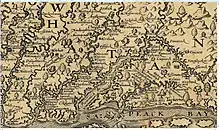 In 1608, Captain John Smith explored the river now known as the Potomac and made drawings of his observations which were later compiled into a map and published in London in 1612. This detail from that map shows his rendition of the river that the local tribes had told him was called the "Patawomeck". "Potomac" is a European spelling of Patawomeck, the Algonquian name of a Native American village on its southern bank.[11] Native Americans had different names for different parts of the river, calling the river above Great Falls Cohongarooton, meaning "honking geese"[12][13] and "Patawomke" below the Falls, meaning "river of swans".[14] The spelling of the name has taken many forms over the years from "Patawomeck" (as on Captain John Smith's map) to "Patomake", "Patowmack", and numerous other variations in the 18th century and now "Potomac".[13] The river's name was officially decided upon as "Potomac" by the Board on Geographic Names in 1931.[15] .jpg.webp) Tundra swans were the predominant species of swan on the Potomac River when the Algonquian tribes dwelled along its shores, and continue to be the most populous variety today.[16] The river itself is at least 3.5 million years old,[9] likely extending back ten to twenty million years before present when the Atlantic Ocean lowered and exposed coastal sediments along the fall line. This included the area at Great Falls, which eroded into its present form during recent glaciation periods.[20]
The Potomac River brings together a variety of cultures throughout the watershed from the coal miners of upstream West Virginia to the urban residents of the nation's capital and, along the lower Potomac, the watermen of Virginia's Northern Neck. 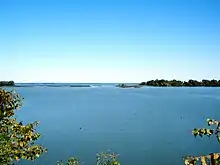 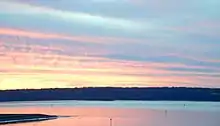 Sunset over the Potomac near Mount Vernon Civil War Era Confederate troops crossing the fords of the Potomac in early September 1862 for the invasion of Maryland, which would culminate in the Battle of Antietam. (Print of a wood carving based on a drawing by Thomas Nast; first published in the September 27, 1862 edition of Harper's Weekly.) Union defenses along the Potomac near Washington, DC Top row: Chain Bridge (two views) and Pimmit Run Bridge; Bottom Row: Aqueduct Bridget {two views) and Georgetown Ferry Union soldiers manning the Lower Battery at the north end of Chain Bridge in 1862. 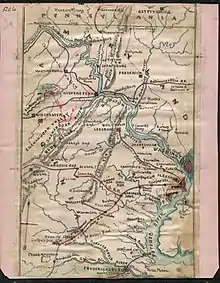 Map of the Potomac River and its environs circa 1862 by Robert Knox Sneden. Washington, D.C. began using the Potomac as its principal source of drinking water with the opening of the Washington Aqueduct in 1864, using a water intake constructed at Great Falls.[23][24] Water supply and water qualityAn average of approximately 486 million US gallons (1,840,000 m3) of water is withdrawn daily from the Potomac in the Washington area for water supply, providing about 78 percent of the region's total water usage, this amount includes approximately 80 percent of the drinking water consumed by the region's estimated 6.1 million residents.[5][25] 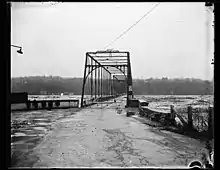 The Potomac River surges over the deck of Chain Bridge during the historic 1936 flood. The bridge was so severely damaged by the raging water, and the debris it carried, that its superstructure had to be re-built; the new bridge was opened to traffic in 1939. (This photograph was taken from a vantage point on Glebe Road in Arlington County, Virginia. The houses on the bluffs in the background are located on the Potomac Palisades of Washington, DC.) As a result of damaging floods in 1936 and 1937,[7] the Army Corps of Engineers proposed the Potomac River basin reservoir projects, a series of dams that were intended to regulate the river and to provide a more reliable water supply. One dam was to be built at Little Falls, just north of Washington, backing its pool up to Great Falls. Just above Great Falls, the much larger Seneca Dam was proposed whose reservoir would extend to Harpers Ferry.[26] Several other dams were proposed for the Potomac and its tributaries.
When detailed studies were issued by the Corps in the 1950s, they met sustained opposition, led by U.S. Supreme Court Justice William O. Douglas, resulting in the plans' abandonment.[30] The only dam project that did get built was Jennings Randolph Lake on the North Branch.[31] The Corps built a supplementary water intake for the Washington Aqueduct at Little Falls in 1959.[32] 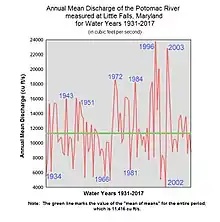 This chart displays the Annual Mean Discharge of the Potomac River measured at Little Falls, Maryland for Water Years 1931–2017 (in cubic feet per second). Source of data: USGS[2] 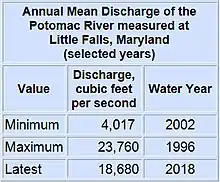 Source of data: USGS[33] In 1940 Congress passed a law authorizing creation of an interstate compact to coordinate water quality management among states in the Potomac basin. Maryland, West Virginia, Pennsylvania, Virginia, and the District of Columbia agreed to establish the Interstate Commission on the Potomac River Basin. The compact was amended in 1970 to include coordination of water supply issues and land use issues related to water quality.[34] 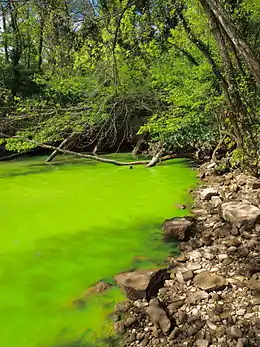 Eutrophication in the Potomac River is evident from this bright green water in Washington, D.C., caused by a dense bloom of cyanobacteria, April 2012 Beginning in the 19th century, with increasing mining and agriculture upstream and urban sewage and runoff downstream, the water quality of the Potomac River deteriorated. This created conditions of severe eutrophication. It is said that President Abraham Lincoln used to escape to the highlands on summer nights to escape the river's stench. In the 1960s, with dense green algal blooms covering the river's surface, President Lyndon Johnson declared the river "a national disgrace" and set in motion a long-term effort to reduce pollution from sewage and restore the beauty and ecology of this historic river. One of significant pollution control projects at the time was the expansion of the Blue Plains Advanced Wastewater Treatment Plant, which serves Washington and several surrounding communities.[35] Enactment of the 1972 Clean Water Act led to construction or expansion of additional sewage treatment plants in the Potomac watershed. Controls on phosphorus, one of the principal contributors to eutrophication, were implemented in the 1980s, through sewage plant upgrades and restrictions on phosphorus in detergents.[34]  Monthly Mean Data for Water Years 1930 - 2018 Source of data: USGS[36] By the end of the 20th century, notable success had been achieved, as massive algal blooms vanished and recreational fishing and boating rebounded. Still, the aquatic habitat of the Potomac River and its tributaries remain vulnerable to eutrophication, heavy metals, pesticides and other toxic chemicals, over-fishing, alien species, and pathogens associated with fecal coliform bacteria and shellfish diseases. In 2005 two federal agencies, the US Geological Survey and the Fish and Wildlife Service, began to identify fish in the Potomac and tributaries that exhibited "intersex" characteristics, as a result of endocrine disruption caused by some form of pollution.[37] On November 13, 2007, the Potomac Conservancy, an environmental group, issued the river a grade of "D-plus", citing high levels of pollution and the reports of "intersex" fish.[38] Since then, the river has improved with a reduction in nutrient runoff, return of fish populations, and land protection along the river. As a result, the same group issued a grade of "B" for 2017 and 2018.[39] In March 2019, the Potomac Riverkeeper Network launched a laboratory boat dubbed the "Sea Dog", which will be monitoring water quality in the Potomac and providing reports to the public on a weekly basis;[40] in that same month, the catching near Fletcher's Boat House of a Striped Bass estimated to weigh 35 lbs was seen as a further indicator of the continuing improvement in the health of the river.[41]
Legal issuesThis westward-looking aerial photograph shows the Shenandoah River (left) flowing into the Potomac River (right) at Harpers Ferry, WV. The Potomac then continues eastward toward the Chesapeake Bay. (Visible in the foreground are the ruins of the famed B&O Bridge which was destroyed nine times during the Civil War -- four times by military action and five times by floods.) Boundary between Maryland, Virginia, and West Virginia at Harpers Ferry Satellite view of the Potomac River passing through two water gaps downstream of Harpers Ferry For 400 years Maryland and Virginia have disputed control of the Potomac and its North Branch, since both states' original colonial charters grant the entire river rather than half of it as is normally the case with boundary rivers. In its first state constitution adopted in 1776, Virginia ceded its claim to the entire river but reserved free use of it, an act disputed by Maryland. Both states acceded to the 1765 Mount Vernon Compact and the 1877 Black-Jenkins Award which granted Maryland the river bank-to-bank from the low water mark on the Virginia side, while permitting Virginia full riparian rights short of obstructing navigation. From 1957 to 1996, the Maryland Department of the Environment (MDE) routinely issued permits applied for by Virginia entities concerning use of the Potomac. However, in 1996 the MDE denied a permit submitted by the Fairfax County Water Authority to build a water intake 725 feet (220 m) offshore, citing potential harm to Maryland's interests by an increase in Virginia sprawl caused by the project. After years of failed appeals within the Maryland government's appeal processes, in 2000 Virginia took the case to the Supreme Court of the United States, which exercises original jurisdiction in cases between two states. Maryland claimed Virginia lost its riparian rights by acquiescing to MDE's permit process for 63 years (MDE began its permit process in 1933). A Special Master appointed by the Supreme Court to investigate recommended the case be settled in favor of Virginia, citing the language in the 1785 Compact and the 1877 Award. On December 9, 2003, the Court agreed in a 7–2 decision.[42] 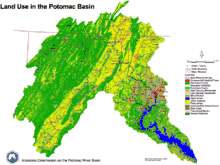 Map of land use in the watershed The original charters are silent as to which branch from the upper Potomac serves as the boundary, but this was settled by the 1785 Compact. When West Virginia seceded from Virginia in 1863, the question of West Virginia's succession in title to the lands between the branches of the river was raised, as well as title to the river itself. Claims by Maryland to West Virginia land north of the South Branch (all of Mineral and Grant Counties and parts of Hampshire, Hardy, Tucker and Pendleton Counties) and by West Virginia to the Potomac's high-water mark were rejected by the Supreme Court in two separate decisions in 1910.[43][44] Flora of the Potomac River Basin
Fauna of the Potomac River and its BasinFish After an absence lasting many decades, the American Shad has recently returned to the Potomac. A variety of fish inhabit the Potomac, including bass, muskellunge, pike, walleye. The northern snakehead, an invasive species resembling the native bowfin, lamprey, and American eel, was first seen in 2004.[45][46] Many types of sunfish are also present in the Potomac and its headwaters.[47] Although rare, bull sharks can be found.[48] After having been depressed for many decades, the river's population of American Shad is currently re-bounding as a result of the ICPRB's successful "American Shad Restoration Project" that was begun in 1995. In addition to stocking the river with more than 22 million shad fry, the Project supervised construction of a fishway that was built to facilitate the passage of adults around the Little Falls Dam on the way to their traditional spawning grounds upstream.[49]
Mammals Several hundred Bottle-nosed Dolphins live six months of the year (from mid-April through mid-October) in the Potomac. Depicted here, a mother with her young.
Early European colonists who settled along the Potomac found a diversity of large and small mammals living in the dense forests nearby. Bison, elk, wolves ( gray and red) and panthers (cougars) were still present at that time, but had been hunted to extirpation by the middle of the 19th century. Among the denizens of the Potomac's banks, beavers and otters met a similar fate, while small populations of minks and martens survived into the 20th century in some secluded areas. There is no record of early settlers having observed marine mammals in the Potomac, but several sightings of Atlantic Bottle-nosed Dolphins (Tursiops truncatus) were reported during the 19th century. In July 1844. a pod of 14 adults and young was followed up the river by men in boats as high as the Aqueduct Bridge (approximately the same location occupied by Key Bridge today).[50] Since 2015, perhaps as a result of warmer temperatures, rising water levels in the Chesapeake Bay and improving water quality in the Potomac, unprecedented numbers of Atlantic Bottle-nosed Dolphins have been observed in the river. According to Dr Janet Mann of Georgetown University's Potomac-Chesapeake Dolphin Project, more than 500 individual members of the species have been identified in the Potomac during this period.[51] Birds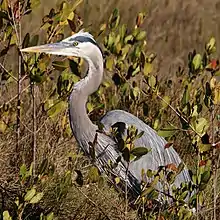 A Great Blue Heron
Reptiles Eastern Box Turtles are frequently spotted along the towpath of the C&O Canal.
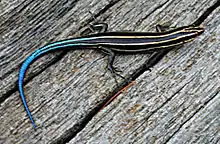 Five-lined skink, juvenile
Amphibians_(25522389762).jpg.webp) Eastern Tiger Salamanders (Ambystoma tigrinum) can be found sheltering under rocks along the banks of the Potomac.
The Potomac River SystemNorth Branch Potomac River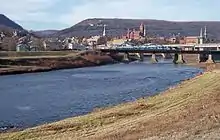 The North Branch between Cumberland, Maryland, and Ridgeley, West Virginia, in 2007 The source of the North Branch Potomac River is at the Fairfax Stone located at the junction of Grant, Tucker and Preston counties in West Virginia. 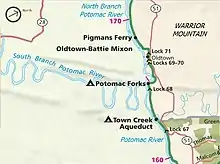 Confluence of the North and South Branches of the Potomac River near Potomac Forks Campsite (southeast of Cumberland), Allegany County, Maryland From the Fairfax Stone, the North Branch Potomac River flows 27 miles (43 km) to the man-made Jennings Randolph Lake, an impoundment designed for flood control and emergency water supply. Below the dam, the North Branch cuts a serpentine path through the eastern Allegheny Mountains. First, it flows northeast by the communities of Bloomington, Luke, and Westernport in Maryland and then on by Keyser, West Virginia to Cumberland, Maryland. At Cumberland, the river turns southeast. 103 miles (166 km) downstream from its source,[4] the North Branch is joined by the South Branch between Green Spring and South Branch Depot, West Virginia from whence it flows past Hancock, Maryland and turns southeast once more on its way toward Washington, D.C., and the Chesapeake Bay. The following table shows the major tributaries of the North Branch Potomac River, listed in order from the source to its mouth. Numerous other tributary creeks exist.
South Branch Potomac River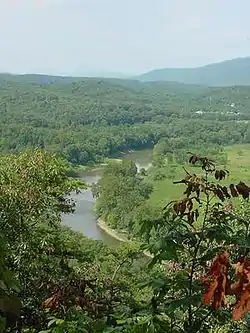 The South Branch Potomac River has its headwaters in northwestern Highland County, Virginia near Hightown along the eastern edge of the Allegheny Front. After a river distance of 139 miles (224 km),[4] the mouth of the South Branch lies east of Green Spring in Hampshire County, West Virginia where it meets the North Branch Potomac River to form the Potomac.[52] The North Fork South Branch Potomac River, 43.6 miles (70.2 km) long,[4] forms just north of the Virginia/West Virginia border in Pendleton County at the confluence of the Laurel Fork and Straight Fork along Big Mountain 3,881 feet (1,183 m). From Circleville, the North Fork flows northeast through Pendleton County between the Fore Knobs 2,949 feet (899 m) to its west and the River Knobs, 2,490 feet (759 m) to its east. At Seneca Rocks, the North Fork is met by Seneca Creek. From Seneca Rocks, the North Fork continues to flow northeast along the western edge of North Fork Mountain 3,389 feet (1033 m) into Grant County. Flowing east through North Fork Gap, the North Fork joins the South Branch Potomac at the town of Cabins, west of Petersburg. The South Fork South Branch Potomac River forms just north of U.S. Route 250 in Highland County, Virginia near Monterey, and flows 68.4 miles (110.1 km)[4] north-northeastward to the South Branch Potomac River at Moorefield in Hardy County, West Virginia. From 1896 to 1929, it was named the Moorefield River by the Board on Geographic Names to avoid confusion with the South Branch. Upper Potomac RiverThis stretch encompasses the section of the Potomac River from the confluence of its North and South Branches through Opequon Creek near Shepherdstown, West Virginia.[53]
Lower Potomac River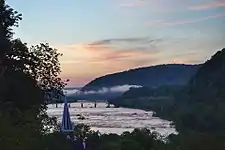 Sunrise view from Jefferson Rock at Harpers Ferry, WV. (In the distance is the Sandy Hook Bridge over the Potomac River that connects Maryland (left bank) with Virginia along U.S. Highway 340.) This section covers the Potomac from just above Harpers Ferry in West Virginia down to Little Falls, Maryland on the border between Maryland and Washington, DC.
Tidal Potomac River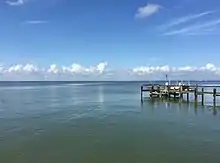 View southwest across the tidal Potomac River from the south end of Cobb Island Road on Cobb Island, Charles County, Maryland The Tidal Potomac River lies below the Fall Line. This 108-mile (174-km) stretch encompasses the Potomac from a short distance below the Washington, DC - Montgomery County line, just downstream of the Little Falls of the Potomac River, to the Chesapeake Bay.[54]
Additional images
See also
Notes and referencesNotes
References
Works cited
External links
| |||||||||||||||||||||||||||||||||||||||||||||||||||||||||||||||||||||||||||||||||||||||||||||||||||||||||||||||||||||||||||||||||||||||||||||||||||||||||||||||||||||||||||||||||||||||||||||||||||||||||||||||||||||||||||||||||||||||||||||||||||||||||||||||||||||||||||||||||||||||||||||||||||||||||||||||||||||||||||||||||||||||||||||||||||||||||||||||||||||||||||||||||||||||||||||||||||||||||||||||||||||||||||||||||||||||||||||||||||||||||||||||||||||||||||||||||||||||||||||||||||||||||||||||||||||||||||||||||||||||||||||||||||||||||||||||||||||||||||||||||||||||||||||||||||||||||||||||||||||||||||||||||||||||||||||||||||||||||||||||||||||||||||||||||||||||||||||||||||||||||||||||||||||||||||||||||||||||||||||||||||||||||||||||||||||||||||||||||||||||||||||||||||||||||||||||||||||||||||||||||||||||||||||||||||||||||||||||||||||||||||||||||||||||||||||||||||||||||||||||||||||||||||||||||||||||||||||||||||||||||||||||||||||||||||||||||||||||||||||||||||||||||||||||||||||||||||||||||||||||

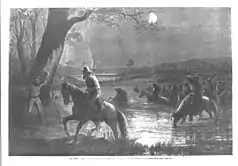
%252C_Block_House_for_defense_of_Aqueduct_Bridge%252C_and_Georgetown_Ferry_LCCN2003670507.jpg.webp)
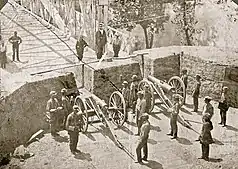
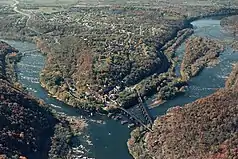

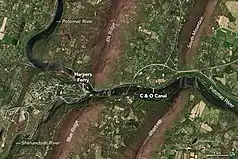

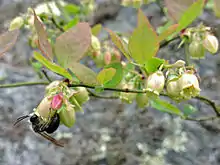
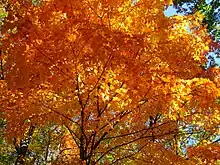
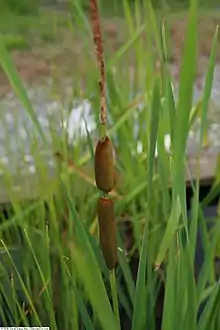
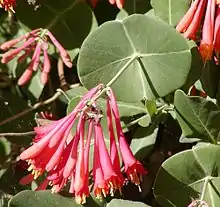
_(21787518884).jpg.webp)
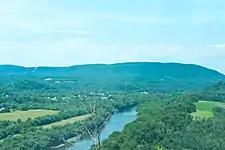
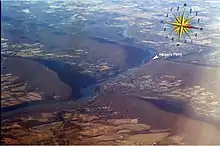

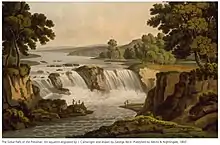
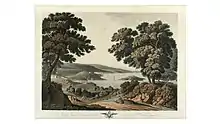
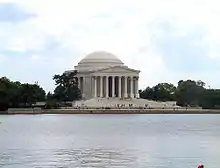
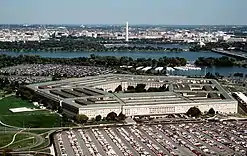
_LOC.jpg.webp)
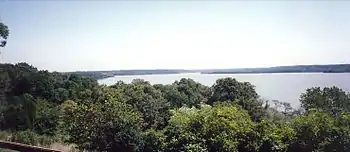

_between_Gormania%252C_Grant_County%252C_West_Virginia_and_Gorman%252C_Garrett_County%252C_Maryland.jpg.webp)
